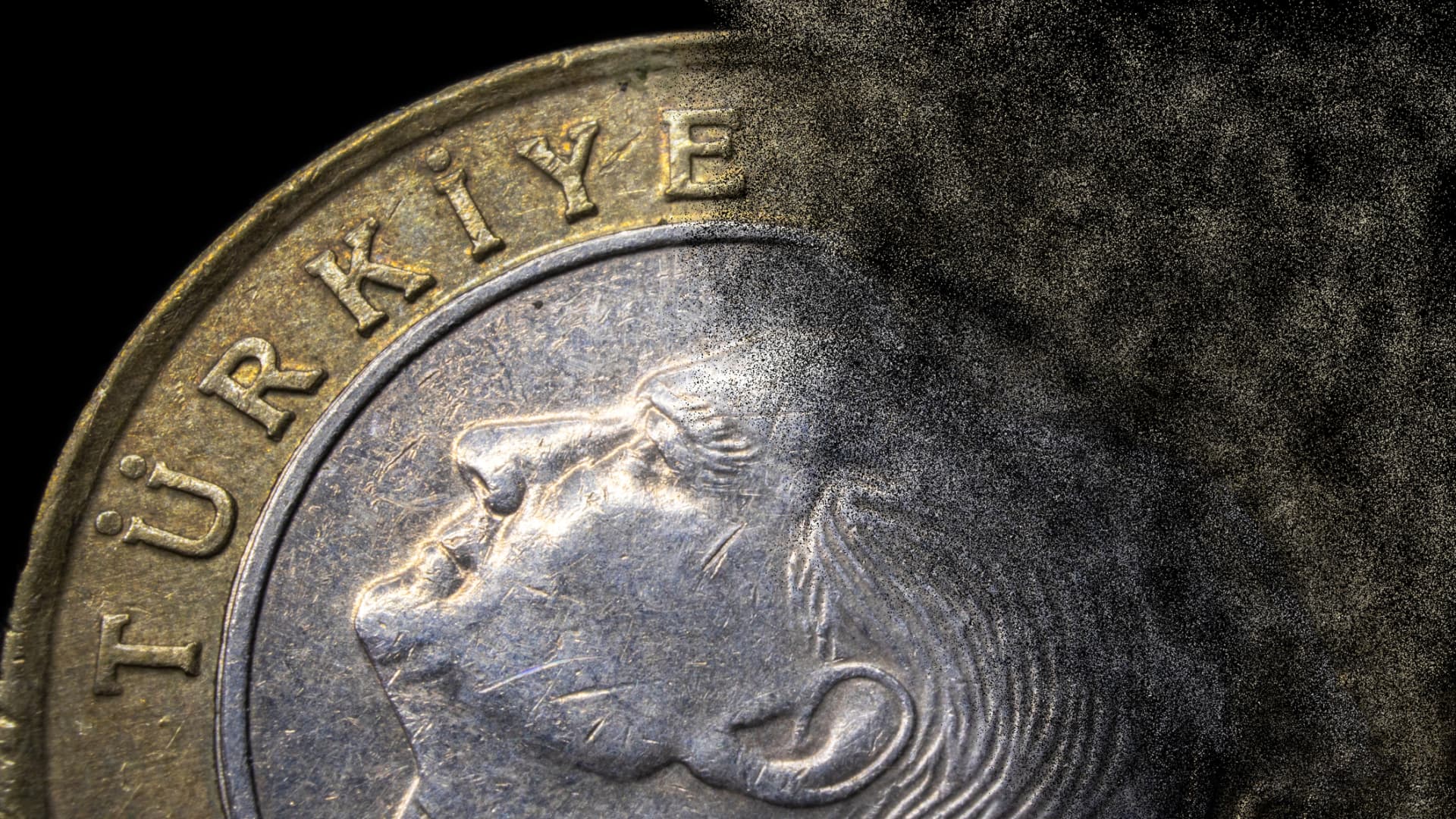Vanishing Turkish Currency: 1 Turkish Lira with the Portrait of Kemal AtatürkTurkish
Manuel Augusto Moreno | Moment | Getty Images
ISTANBUL, March 3 (Reuters) – Turkish annual inflation fell slightly to 55.18% in February, official data showed on Friday, just below forecast, following massive earthquakes that hit its southeast region and killed more than 45,000 people just under a month ago.
Month-on-month, consumer prices rose 3.15%, the Turkish Statistical Institute said, lower than a Reuters poll forecast of 3.4%. Annually, consumer price inflation <TRCPIY=ECI> was forecast to be 55.5%.
The biggest monthly rise in prices was in the food and non-alcoholic drinks sector, which was up 7.36%, while prices of education and restaurants and hotels items climbed 5.69% and 4.07% respectively.
The statistics institute said prices from the field were not collected from the earthquake-hit provinces of Gaziantep, Malatya and Hatay.
The domestic producer price index was up 1.56% month-on-month in February for an annual rise of 76.61%
The lira traded at 18.8920 after the data, unchanged from its close on Thursday. The currency has been mostly flat since the summer due largely to state management.
Inflation has been stoked by a currency crisis at the end of 2021 and hit a 24-year peak of 85.51% in October. The central bank cut its policy rate despite soaring inflation to preserve growth momentum and added a further 50 basis point cut following the earthquake.
Economists and government officials expect the earthquake, which damaged hundreds of thousands of buildings, to cost more than $50 billion lira and shave one to two percentage points off the country’s economic growth this year.




















Discussion about this post